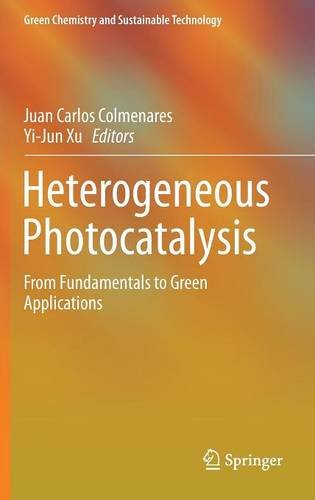

Most ebook files are in PDF format, so you can easily read them using various software such as Foxit Reader or directly on the Google Chrome browser.
Some ebook files are released by publishers in other formats such as .awz, .mobi, .epub, .fb2, etc. You may need to install specific software to read these formats on mobile/PC, such as Calibre.
Please read the tutorial at this link: https://ebookbell.com/faq
We offer FREE conversion to the popular formats you request; however, this may take some time. Therefore, right after payment, please email us, and we will try to provide the service as quickly as possible.
For some exceptional file formats or broken links (if any), please refrain from opening any disputes. Instead, email us first, and we will try to assist within a maximum of 6 hours.
EbookBell Team

4.1
30 reviewsThe book explains the principles and fundamentals of photocatalysis and highlights the current developments and future potential of the green-chemistry-oriented applications of various inorganic, organic, and hybrid photocatalysts. The book consists of eleven chapters, including the principles and fundamentals of heterogeneous photocatalysis; the mechanisms and dynamics of surface photocatalysis; research on TiO2-based composites with unique nanostructures; the latest developments and advances in exploiting photocatalyst alternatives to TiO2; and photocatalytic materials for applications other than the traditional degradation of pollutants, such as carbon dioxide reduction, water oxidation, a complete spectrum of selective organic transformations and water splitting by photocatalytic reduction. In addition, heterogeneized polyoxometalate materials for photocatalytic purposes and the proper design of photocatalytic reactors and modeling of light are also discussed.
This book appeals to a wide readership of the academic and industrial researchers and it can also be used in the classroom for undergraduate and graduate students focusing on heterogeneous photocatalysis, sustainable chemistry, energy conversion and storage, nanotechnology, chemical engineering, environmental protection, optoelectronics, sensors, and surface and interface science.
Juan Carlos Colmenares is a Professor at the Institute of Physical Chemistry, Polish Academy of Sciences, Poland.Yi-Jun Xu is a Professor at the State Key Laboratory of Photocatalysis on Energy and Environment, College of Chemistry, Fuzhou University, China.